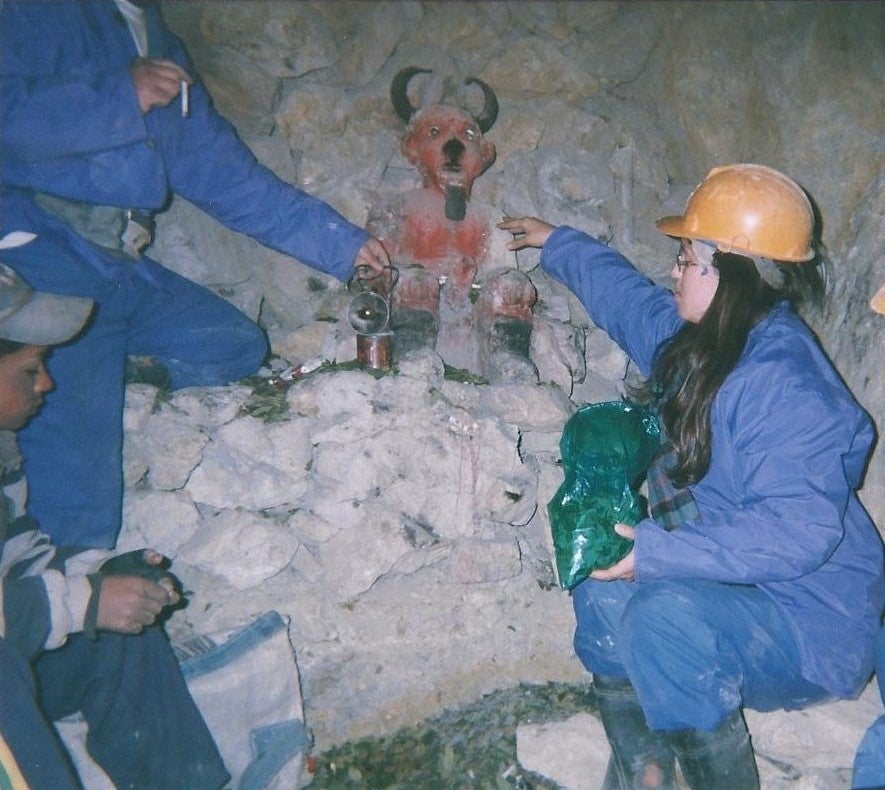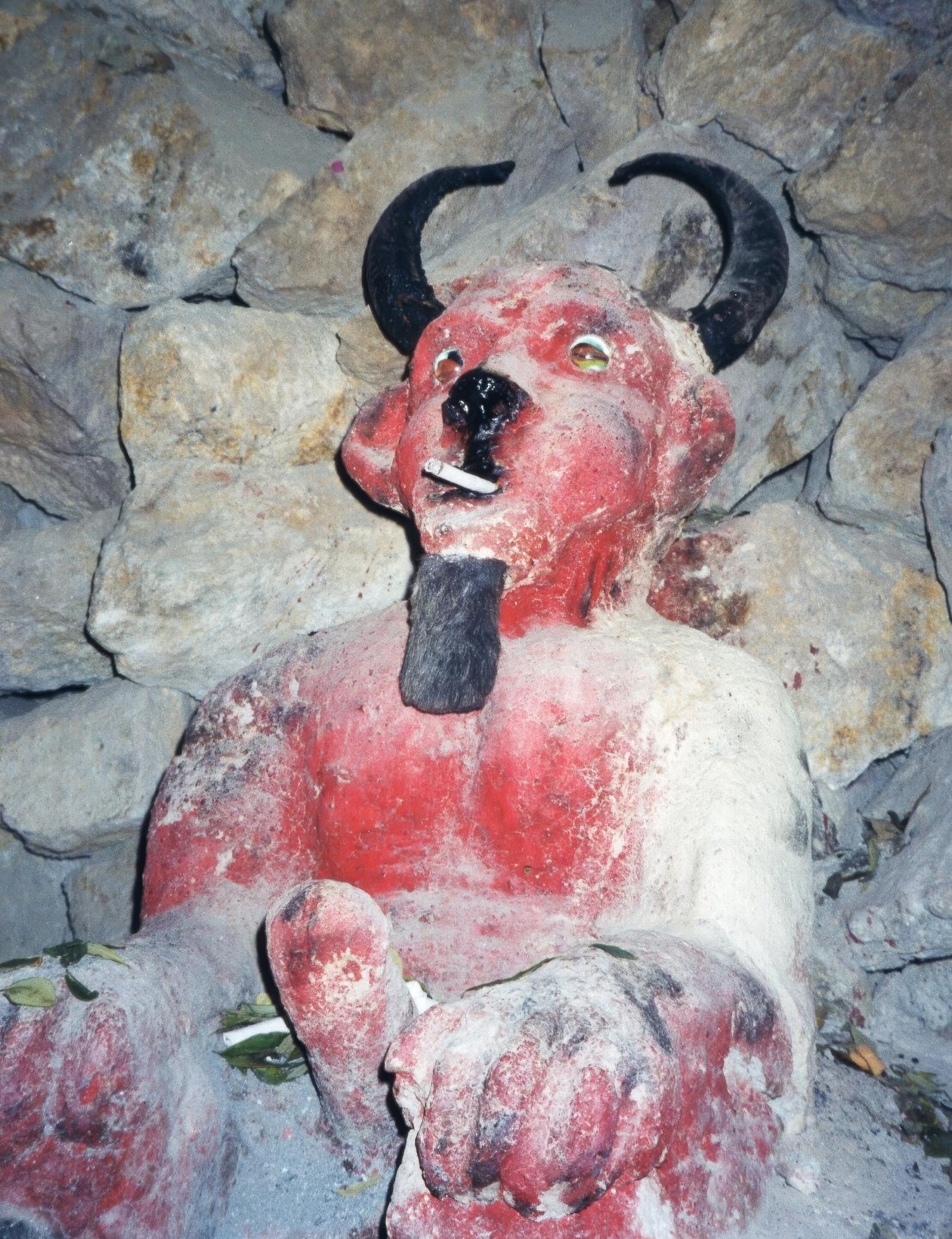En 2003, gracias a una beca de verano proporcionada por el American Field Service, me enviaron durante mi segundo año de instituto a Bolivia. Una de las excursiones clave de aquel verano fue a la ciudad de Potosí, situada a una de las mayores altitudes del mundo y, específicamente, en el famoso Cerro Rico. Cerro Rico significa “montaña rica”, nombre que recibió cuando se encontraron enormes cantidades de plata durante la conquista española en 1545.
Pocos años después de este descubrimiento, se inició la extracción y explotación a gran escala de este recurso en el corazón de las tierras Quechuas y Aymaras, y esta riqueza de plata se canalizó directamente a las arcas del Imperio español. Potosí no sólo se convirtió en la ciudad más grande del llamado Nuevo Mundo durante el siglo XVI, sino que los lugareños afirmaban que se sacaba plata suficiente de Potosí para construir un puente que se extendería desde Sudamérica hasta Europa. Incluso cuando las cantidades de plata empezaron a disminuir, el estaño y otros minerales como el plomo y el cobre se convirtieron rápidamente en el siguiente foco de extracción que ha continuado hasta el presente.

Al Cerro Rico también se le conoce por otro nombre: el cerro come hombres. Como estudiante aquel verano en Potosí, fui testiga de primera mano de cómo adquirió este nombre durante una excursión del programa dirigido por dos mineros que llevaron a nuestro pequeño grupo de estudiantes a las profundidades de la montaña en una visita oficial a la mina. Equipados con trajes de trabajo, cascos y linternas, otros artículos obligatorios que tuvimos que comprar antes de entrar en las oscuras cavernas incluían cigarrillos, hojas de coca y pequeñas botellas de alcohol de 90 grados, los favoritos del Tío Diablo, (un personaje) que supervisa todas y cada una de las actividades que tienen lugar en las profundidades de estas minas.


Siguiendo el protocolo de los mineros, nuestra primera parada fue para presentar nuestros respetos al Tío Diablo, pidiéndole permiso para entrar en el mundo subterráneo que es su dominio y ofrecerle nuestra gratitud. Después de encender un cigarrillo y colocarlo en la boca de la estatua, pasamos a los otros niveles de las cavernas, donde observamos a mineros, desde adolescentes hasta hombres de 40 años, que trabajaban duramente con herramientas básicas durante horas. Nos dijeron que muchos de estos mineros, si no la mayoría, desarrollarían una silicosis debilitante.
Me sentí profundamente conmocionada, transformada y radicalizada por lo que había visto en la mina. Esta visita me ofreció una visión del colonialismo, el extractivismo y la explotación de las personas y la Pachamama en su forma más cruda y tangible. Más allá de las escenas inquietantes de lo que observé en la mina, las reacciones viscerales también se han quedado conmigo hasta el día de hoy de lo que el colonialismo, la extracción y la injusticia pueden saber, oler y sentir. Es algo que nunca he olvidado.
Las visitas a las minas de Potosí no han cesado, como tampoco lo han hecho la minería y la extracción continua de los minerales que forman la base de nuestra economía mundial y de las tecnologías modernas. Además de las formas más tradicionales de minería de roca dura que se practican en Potosí y otras zonas de Bolivia, una nueva ola de minería de minerales de transición es fundamental para la transición a la llamada economía verde. Volviendo a Bolivia y teniendo también la oportunidad de visitar Chile en 2024, me hospedé en dos de los tres puntos del «Triángulo del Litio» en Sudamérica. Esta zona está situada en el altiplano que comparten Argentina, Bolivia y Chile y es donde se encuentran algunas de las mayores concentraciones de litio del mundo.
En las afueras del altiplano boliviano, en la ciudad de Coro Coro, el historiador y activista Carlos Mamani (Aymara) defiende las tierras sagradas y los sitios culturales de su comunidad frente a la minería del cobre, y es también un defensor de la importancia de la gobernanza tradicional centrada en el sistema de ayllu, que designa a las naciones tradicionales. Según Mamani, la ubicación del ayllu de su comunidad estaba relacionada con sus prácticas tradicionales de recolección de sal, una actividad que su comunidad ha mantenido desde tiempos inmemoriales hasta la actualidad.
Con el apoyo del Fondo Guardianes de la Tierra, Mamani está ayudando a su comunidad a fortalecer esta tradición de recolección de sal y al mismo tiempo explora oportunidades para que los miembros de la comunidad obtengan ingresos mediante su venta. Mamani también está concienciando sobre la ley boliviana que estipula que cualquier recurso extraído del subsuelo y luego evaporado pertenece al Estado boliviano. Aunque a primera vista esta ley parecería aplicarse sólo al litio, Mamani afirma que esta ley “también tiene potencialmente ramificaciones para recursos culturales como el cultivo de la sal y la soberanía de los ayllus para mantener estas prácticas ancestrales”.
Siguiendo el rastro de sal blanca y brillante hacia el sur de Bolivia, Jiliri Mallku Efrain Quispe (Aymara), un líder tradicional, o Jiliri, de la red de comunidades Marka Tahua, me lleva en un auto todo terreno al corazón del Triángulo del Litio. El centro de gravedad se sitúa en el Salar de Uyuni, el mayor salar del mundo. Su blanca extensión está salpicada de pequeñas islas que son núcleos de vida para cactus y pequeños animales, y un gran atractivo para turistas de todo el mundo.
La red de 13 comunidades que forman Marka Tahua, una de las jurisdicciones clave que comprenden a los propietarios y administradores tradicionales del salar de Uyuni, está preocupada por los impactos de la extracción de litio en el uso del agua que ya están viendo en su salar sagrado. Unidos en su oposición a la extracción de litio, los dirigentes de Marka Tahua piden que se invierta en turismo cultural, y están utilizando la ayuda del KOEF para construir infraestructuras culturales tradicionales en la isla de Qujiry/Isla del Pescado, cuyo objetivo será atraer turistas. Quispe afirma: “Queremos dar a los turistas un vistazo de nuestra forma de vida, de nuestra cosmovisión, para que comprendan que somos nosotros, como Ponchos Blancos (el traje tradicional que visten las autoridades), el Gobierno Autónomo Originario Marka Tahua, quienes cuidamos y mantenemos la autoridad sobre el Salar de Uyuni”.
Líderes Marka Tahua frente al avance inicial de la construcción de infraestructuras de turismo cultural en la isla Qujiry, Bolivia.
Al salir del salar de Uyuni y cruzar la frontera hacia el desierto de Atacama, en el norte de Chile, las comunidades Indígenas de la región de San Pedro de Atacama se encuentran en primera línea no sólo de algunas de las mayores operaciones de extracción de litio, sino también de grandes oleadas de turismo. Con explotaciones de litio que consumen grandes cantidades de agua en el paisaje desértico más árido del mundo, varias comunidades han expresado su oposición a determinadas prácticas industriales, especialmente en lo que respecta al uso del agua. Dirigidos por miembros Indígenas y guías turísticos de las comunidades de Toconao, Coyo y Quitor, estos miembros de la comunidad explican cómo están equilibrando las necesidades de una creciente presencia turística con las crecientes demandas de agua por parte de la industria minera. En Toconao, los sistemas de riego tradicionales que han ayudado a nutrir a la comunidad y la han mantenido alimentada durante milenios en el clima más seco del mundo se destacan como un lugar importante para el turismo cultural. Y lo que es aún más significativo, esta tecnología de riego tradicional es una prueba de la brillantez y la administración ancestrales de los Indígenas, que perdura en el presente a medida que el clima mundial se vuelve más inestable.
Water flowing along the irrigation canals in the Toconao community in northern Chile’s Atacama desert.
Aunque los yacimientos mineros, los procesos y los minerales de la actual búsqueda de metales de transición pueden parecer diferentes de las condiciones que aún pueden presenciarse en minas como Potosí, es indispensable seguir examinando críticamente los impactos de la minería en las comunidades vivas. Después de todo, son estas comunidades, que incluyen la Pachamama, las que permiten la existencia de la minería, el turismo y otras industrias. Los rostros, los conocimientos tradicionales y los puntos de vista de las comunidades en primera línea del Triángulo del Litio tienen mucho que enseñarnos sobre los verdaderos contornos de lo que significan las tecnologías y economías “verdes” para nuestras relaciones con un mundo vivo que merece nuestra administración y respeto.
Bobbie Chew Bigby (cheroqui) es investigadora postdoctoral en la Universidad de Waterloo, Ontario, Canadá, donde investiga las intersecciones entre el turismo Indígena y el resurgimiento.
Este artículo forma parte de una serie que da a conocer las historias y las voces de las comunidades Indígenas y los defensores de la tierra en el Triángulo del Litio.
Izquierda: Un grupo de dirigentes tradicionales Marka Tahua en el salar de Uyuni, mirando hacia la isla Qujiry, Bolivia.
Derecha: La principal zona de cultivo de sal en el ayllu de Carlos Mamani, o nación tradicional que incluye bloques de sal apilados bajo una cubierta de paja a la derecha.
